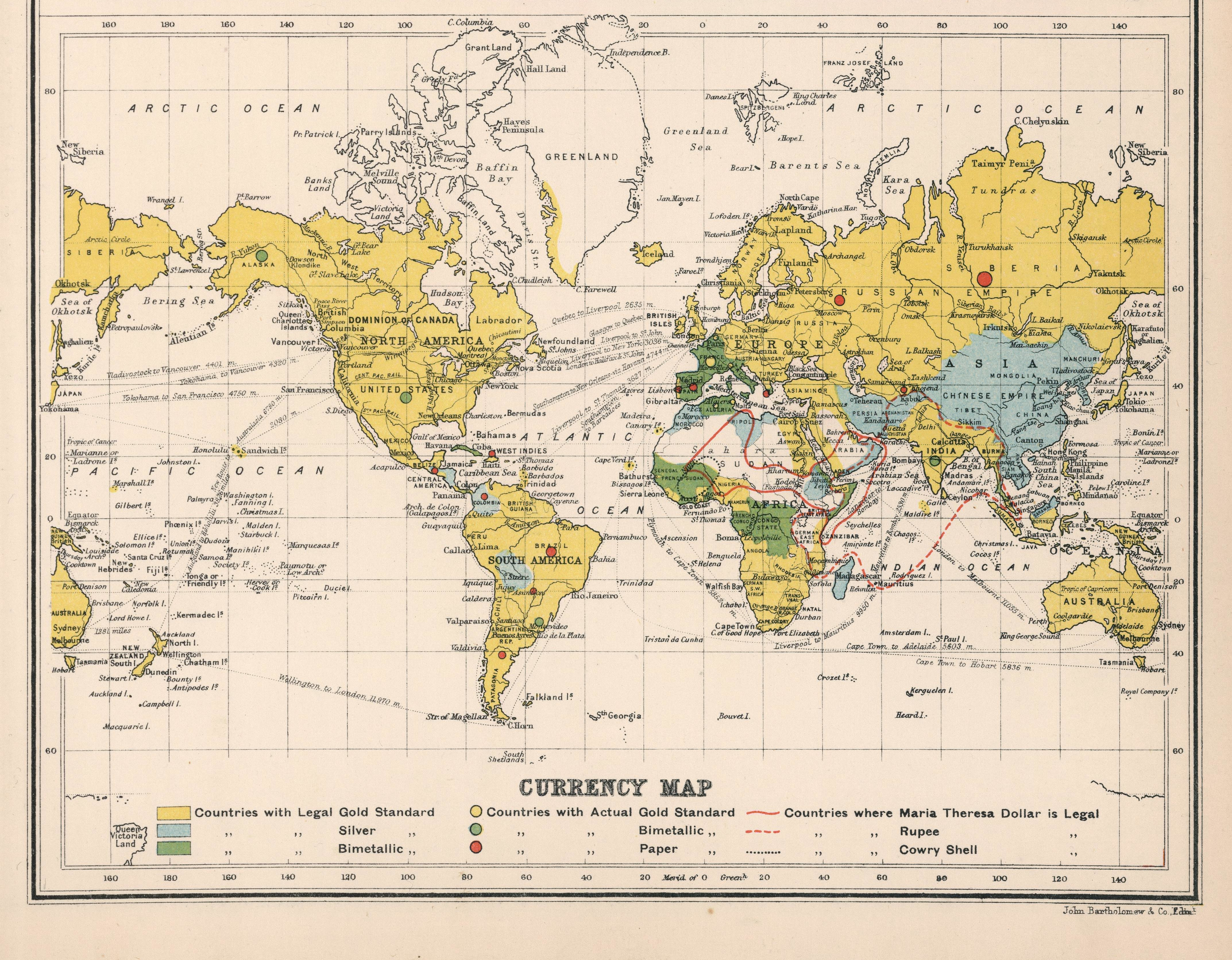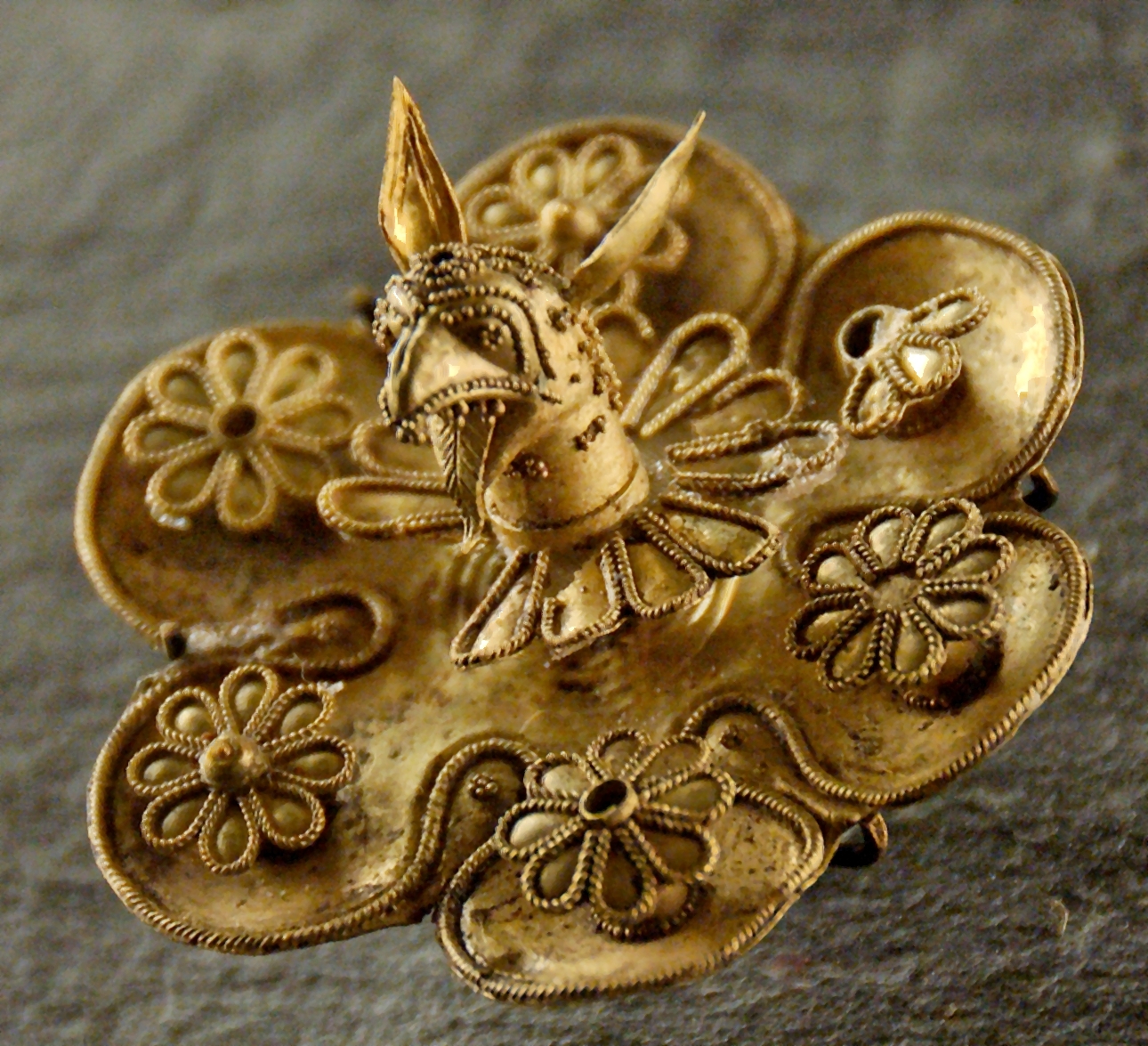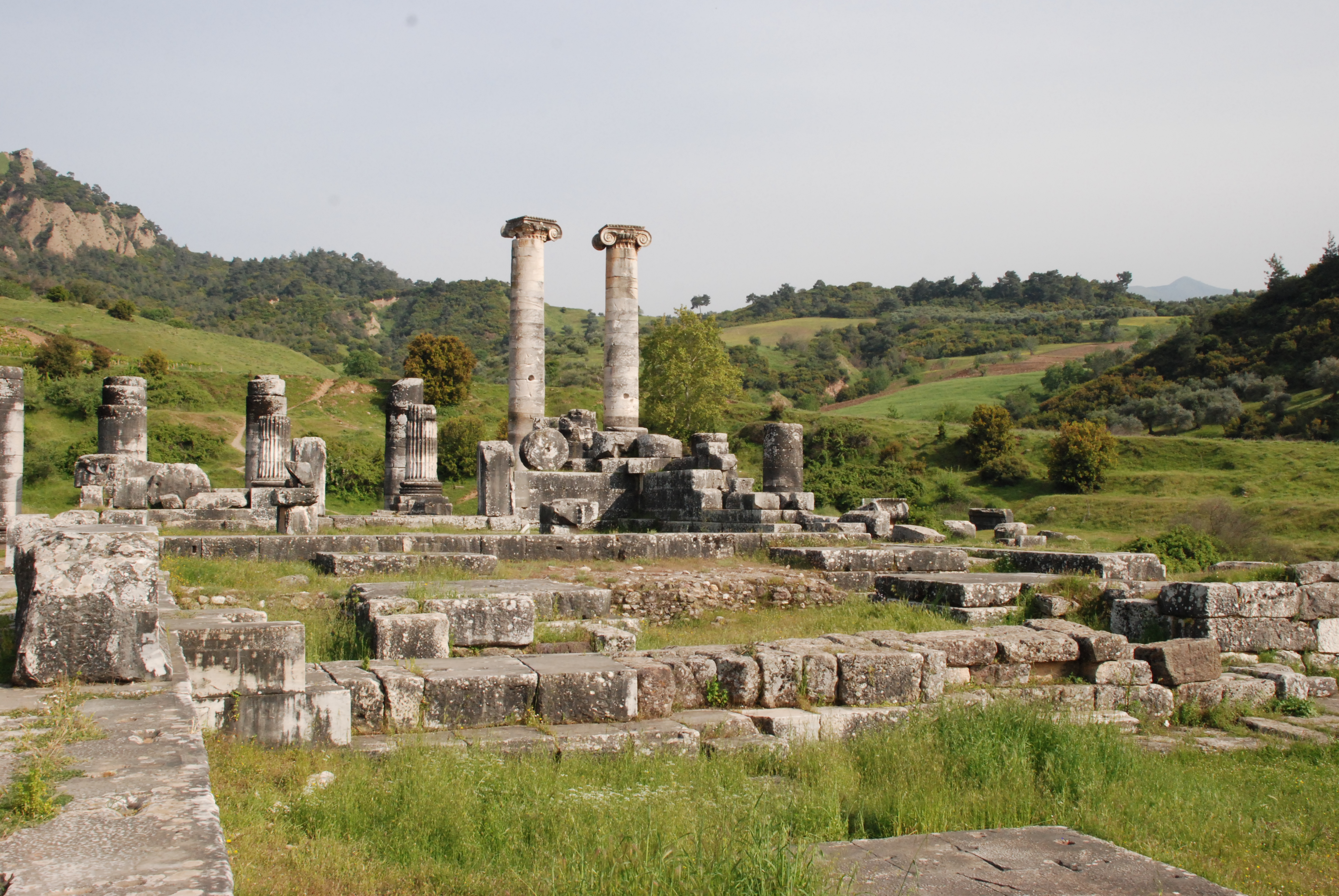|
Bimetalism
Bimetallism, also known as the bimetallic standard, is a monetary standard in which the value of the monetary unit is defined as equivalent to certain quantities of two metals, typically gold and silver, creating a fixed rate of exchange between them. For scholarly purposes, "proper" bimetallism is sometimes distinguished as permitting that both gold and silver money are legal tender in unlimited amounts and that gold and silver may be taken to be coined by the government mints in unlimited quantities. This distinguishes it from "limping standard" bimetallism, where both gold and silver are legal tender but only one is freely coined (e.g. the monies of France, Germany, and the United States after 1873), and from "trade" bimetallism, where both metals are freely coined but only one is legal tender and the other is used as "trade money" (e.g. most monies in western Europe from the 13th to 18th centuries). Economists also distinguish ''legal'' bimetallism, where the law guarantees ... [...More Info...] [...Related Items...] OR: [Wikipedia] [Google] [Baidu] |
Gold Standard
A gold standard is a backed currency, monetary system in which the standard economics, economic unit of account is based on a fixed quantity of gold. The gold standard was the basis for the international monetary system from the 1870s to the early 1920s, and from the late 1920s to 1932 as well as from 1944 until 1971 when the United States unilaterally terminated convertibility of the US dollar to gold, effectively ending the Bretton Woods system. Many states nonetheless hold substantial gold reserves. Historically, the silver standard and bimetallism have been more common than the gold standard. The shift to an international monetary system based on a gold standard reflected accident, network externalities, and path dependence. Great Britain accidentally adopted a ''de facto'' gold standard in 1717 when Isaac Newton, then-master of the Royal Mint, set the exchange rate of silver to gold too low, thus causing silver coins to go out of circulation. As Great Britain became the w ... [...More Info...] [...Related Items...] OR: [Wikipedia] [Google] [Baidu] |
Croeseid
The Croeseid, anciently ''Kroiseioi stateres'', was a type of coin, either in gold or silver, which was minted in Sardis by the king of Lydia Croesus (561–546 Before Christ, BC) from around 550 BC. Croesus is credited with issuing the first true gold coins with a standardised purity for general circulation, and the world's first bimetallism, bimetallic monetary system. Precedents Before Croesus, his father Alyattes of Lydia, Alyattes had already started to mint various types of non-standardized coins. They were made in a naturally occurring material called electrum, a variable mix of gold and silver (with about 54% gold and 44% silver), and were in use in Lydia, its capital city Sardis and surrounding areas for about 80 years before Croesus' reign as King of Lydia. The unpredictability of electrum coins' composition implied that they had a variable value, which greatly hampered the development of standardised coinage. The royal symbol stamped on the coin, similar to a seal, was ... [...More Info...] [...Related Items...] OR: [Wikipedia] [Google] [Baidu] |
Witwatersrand Gold Rush
The Witwatersrand Gold Rush was a gold rush that began in 1886 and led to the establishment of Johannesburg, South Africa. It was a part of the Mineral Revolution. Origins In the modern-day province of Mpumalanga, gold miners in the alluvial mines of Barberton and Pilgrim's Rest and local tribes had suspected the existence of gold deposits. In 1886, gold was found in the Witwatersrand region. Scientific studies show that the "Golden Arc", which stretches from Johannesburg to Welkom, used to be a massive inland lake, and silt and gold deposits from alluvial gold settled in the area that formed the found gold. Discovery The first discovery of gold in the region was made in 1852 on the Pardekraal farm, Krugersdorp, in the South African Republic (ZAR) by John Henry Davis, a Welsh mineralogist. Davis presented his gold find to President Andries Pretorius who feared what would happen to the new republic if the discovery became widely known. Davis was told to sell the gold, wort ... [...More Info...] [...Related Items...] OR: [Wikipedia] [Google] [Baidu] |
Electrum
Electrum is a naturally occurring alloy of gold and silver, with trace amounts of copper and other metals. Its color ranges from pale to bright yellow, depending on the proportions of gold and silver. It has been produced artificially and is also known as "Colored gold#Green gold, green gold".Emsley, John (2003Nature's building blocks: an A–Z guide to the elements Oxford University Press. p. 168. . Electrum was used as early as the third millennium BC in the Old Kingdom of Egypt, sometimes as an exterior coating to the pyramidion, pyramidia atop ancient Egyptian pyramids and obelisks. It was also used in the making of ancient Beaker (archaeology) , drinking vessels. The first known metal coins made were of electrum, dating back to the end of the 7th century or the beginning of the 6th century BC. Etymology The name ''electrum'' is the Latinized form of the Greek language, Greek word ἤλεκτρον (''ḗlektron''), mentioned in the ''Odyssey'', referring to a metallic s ... [...More Info...] [...Related Items...] OR: [Wikipedia] [Google] [Baidu] |
Ionia
Ionia ( ) was an ancient region encompassing the central part of the western coast of Anatolia. It consisted of the northernmost territories of the Ionian League of Greek settlements. Never a unified state, it was named after the Ionians who had settled in the region before the archaic period. Ionia proper comprised a narrow coastal strip from Phocaea in the north near the mouth of the river Hermus (now the Gediz), to Miletus in the south near the mouth of the river Maeander, and included the islands of Chios and Samos. It was bounded by Aeolia to the north, Lydia to the east and Caria to the south. The cities within the region figured significantly in the strife between the Persian Empire and the Greeks. Ionian cities were identified by mythic traditions of kinship and by their use of the Ionic dialect, but there was a core group of twelve Ionian cities that formed the Ionian League and had a shared sanctuary and festival at Panionion. These twelve cities were (from ... [...More Info...] [...Related Items...] OR: [Wikipedia] [Google] [Baidu] |
Lydia
Lydia (; ) was an Iron Age Monarchy, kingdom situated in western Anatolia, in modern-day Turkey. Later, it became an important province of the Achaemenid Empire and then the Roman Empire. Its capital was Sardis. At some point before 800 BC, the Lydian people achieved some sort of political cohesion, and existed as an independent kingdom by the 600s BC. At its greatest extent, during the 7th century BC, it covered all of western Anatolia. In 546 BC, it became a Lydia (satrapy), satrapy of the Achaemenid Empire, known as ''Sparda'' in Old Persian. In 133 BC, it became part of the Roman Republic, Roman Asia (Roman province), province of Asia. Lydian coins, made of electrum, are among the oldest in existence, dated to around the 7th century BC. Geography Lydia is generally located east of ancient Ionia in the modern western Turkish provinces of Uşak Province, Uşak, Manisa Province, Manisa and inland İzmir Province, İzmir.Rhodes, P.J. ''A History of the Classical Greek ... [...More Info...] [...Related Items...] OR: [Wikipedia] [Google] [Baidu] |
Asia Minor
Anatolia (), also known as Asia Minor, is a peninsula in West Asia that makes up the majority of the land area of Turkey. It is the westernmost protrusion of Asia and is geographically bounded by the Mediterranean Sea to the south, the Aegean Sea to the west, the Turkish Straits to the northwest, and the Black Sea to the north. The eastern and southeastern limits have been expanded either to the entirety of Asiatic Turkey or to an imprecise line from the Black Sea to the Gulf of Alexandretta. Topographically, the Sea of Marmara connects the Black Sea with the Aegean Sea through the Bosporus and the Dardanelles, and separates Anatolia from Thrace in Southeast Europe. During the Neolithic, Anatolia was an early centre for the development of farming after it originated in the adjacent Fertile Crescent. Beginning around 9,000 years ago, there was a major migration of Anatolian Neolithic Farmers into Neolithic Europe, Europe, with their descendants coming to dominate the continent a ... [...More Info...] [...Related Items...] OR: [Wikipedia] [Google] [Baidu] |
Marc Flandreau
Marc or MARC may refer to: People * Marc (given name), people with the first name * Marc (surname), people with the family name Acronyms * MARC standards, a data format used for library cataloging, * MARC Train, a regional commuter rail system serving Maryland, Washington, D.C., and eastern West Virginia * MARC (archive), a computer-related mailing list archive * M/A/R/C Research, a marketing research and consulting firm * Massachusetts Animal Rights Coalition, a non-profit, volunteer organization * Matador Automatic Radar Control, a guidance system for the Martin MGM-1 Matador cruise missile * Mid-America Regional Council, the Council of Governments and the Metropolitan Planning Organization for the bistate Kansas City region * Midwest Association for Race Cars, a former American stock car racing organization * Revolutionary Agrarian Movement of the Bolivian Peasantry (''Movimiento Agrario Revolucionario del Campesinado Boliviano''), a defunct right-wing political moveme ... [...More Info...] [...Related Items...] OR: [Wikipedia] [Google] [Baidu] |
Milton Friedman
Milton Friedman (; July 31, 1912 – November 16, 2006) was an American economist and statistician who received the 1976 Nobel Memorial Prize in Economic Sciences for his research on consumption analysis, monetary history and theory and the complexity of stabilization policy. With George Stigler, Friedman was among the intellectual leaders of the Chicago school of economics, a neoclassical school of economic thought associated with the faculty at the University of Chicago that rejected Keynesianism in favor of monetarism before shifting their focus to new classical macroeconomics in the mid-1970s. Several students, young professors and academics who were recruited or mentored by Friedman at Chicago went on to become leading economists, including Gary Becker, Robert Fogel, and Robert Lucas Jr. Friedman's challenges to what he called "naive Keynesian theory" began with his interpretation of consumption, which tracks how consumers spend. He introduced a theory w ... [...More Info...] [...Related Items...] OR: [Wikipedia] [Google] [Baidu] |
Angela Redish
Angela Redish is a professor of economics at the Vancouver School of Economics at the University of British Columbia and the acting President of the Canadian Economics Association. From 2001 to 2006, Redish served as the Head of Department of Economics at the University of British Columbia and was awarded The President's Medal of Excellence by the University of British Columbia in 2018 for her contributions towards establishing the Vancouver School of Economics. Education and work Redish was born in United Kingdom and moved to Hamilton, Ontario, Canada with her family during her teen years. She graduated from Wilfrid Laurier University having earned a B.A. in economics. Following this, she took a two-year break to work at Cuso International as a volunteer in Papua New Guinea. Upon returning to Canada, she received a Ph.D. from the University of Western Ontario. Shortly after, she joined the University of British Columbia as an assistant professor of economics at the Vancouve ... [...More Info...] [...Related Items...] OR: [Wikipedia] [Google] [Baidu] |
Allen & Unwin
George Allen & Unwin was a British publishing company formed in 1911 when Sir Stanley Unwin purchased a controlling interest in George Allen & Co. It became one of the leading publishers of the twentieth century and established an Australian subsidiary in 1976. In 1990 Allen & Unwin was sold to HarperCollins, and the Australian branch was the subject of a management buy-out. George Allen & Unwin in the UK George Allen & Sons was established in 1871 by George Allen, with the backing of John Ruskin, becoming George Allen & Co. Ltd. in 1911 when it merged with Swan Sonnenschein and then George Allen & Unwin on 4 August 1914 as a result of Stanley Unwin's purchase of a controlling interest. Frank Arthur Mumby and Frances Helena Swan Stallybrass, Unwin's son Rayner S. Unwin and his nephew Philip helped him to run the company, which published works by Bertrand Russell, Arthur Waley, Roald Dahl, Lancelot Hogben and Thor Heyerdahl. It became well known as J. R. R. Tolkien's ... [...More Info...] [...Related Items...] OR: [Wikipedia] [Google] [Baidu] |
Charles Kindleberger
Charles Poor Kindleberger (October 12, 1910 – July 7, 2003) was an American economic historian and author of over 30 books. His 1978 book ''Manias, Panics, and Crashes'', about speculative stock market bubbles, was reprinted in 2000 after the dot-com bubble. He is well known for his role in developing what would become hegemonic stability theory, arguing that a hegemonic power was needed to maintain a stable international monetary system. He has been referred to as "the master of the genre" on financial crisis by ''The Economist''. Life Background Kindleberger was born in New York City on October 12, 1910. He graduated from the Kent School in 1928, the University of Pennsylvania in 1932, and received a PhD from Columbia University in 1937. During the summer of 1931, he traveled to Europe and attended a seminar hosted by Salvador de Madariaga, but, when the latter was appointed Spanish Ambassador to the United States, Kindleberger attended lectures at the Graduate Institute o ... [...More Info...] [...Related Items...] OR: [Wikipedia] [Google] [Baidu] |






